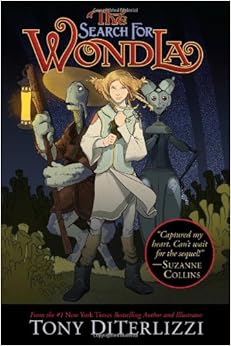
Opening Lines:"Eva Nine was dying. The tiny scarlet dots on her hand mirrored the glowering eyes of the snake that had just bitten her.."
Eva Nine has lived her whole life in a sealed environment, cared for by a robot called Muthr. She is in training for the day she will go outside. Eva Nine knows there are other Sanctuaries out there somewhere and she is hoping that someday she will meet another person. But when an invader breaks into the sanctuary, destroying the place, Eva Nine finds herself climbing a ladder, opening a hatch, and escaping into a world that is not at all what she expected. In that world, she will find friends, enemies, and, perhaps, the answer to the questions that plague her.
This is a wonderfully written story, and a nicely illustrated one at that. It takes the reader into another world that has enough challenges, dangers, and difficulties to have readers on the edge of their seats, and enough friends and resources that Eva Nine can meet those challenges. It is also the kind of fully developed world that is interesting to explore along with Eva.Nine.
It is a big book (489 pages) but written at a level that a strong fourth grade readers up through high school (and college, my amazing student Megan was the one who loaned this to me) would be able to find their way into it, and though the protagonist is a girl, the story is action-packed enough that many boys might be interested in Eva Nine's adventures as well. There are no particularly wonderful themes int he book, but neither is there anything offensive. It is simply a fun story. And with a couple of sequels out there, this might be just the thing to keep that voracious reader in your class busy for a while.
Choldenko, Gennifer (2011) No Passengers Beyond this Point. New York: Scholastic.

Opening lines: "My mom says worry is like a leaky faucet -- every drip makes you imagine something bad on the way...trouble...trouble...trouble,,,do something...do something...do something."
If Franz Kafka wrote an adolescent novel, this might well be what it would be like (up until the ending, which is decidedly un-kafkaesque). Finn Tomkins and hi sisters India and Mouse are flying on a plane from Thousand Oaks, California to Fort Baker Colorado. They are flying by themselves because there mom is still working a job in California and their Uncle Red is waiting for them at Fort Baker. Their plane, however, experiences turbulence, and when it lands, and the Tompkins kids are met by a driver, they find out they are being driven not to Fort Baker, but to Falling Bird. Falling bird at first seems like a dream town. The kids names are on billboards welcoming them and there are crowds shouting their names. They each get their own house with everything just as they wold like it. Before long, however, the dream turns into a dark nightmare world where they each carry a stopwatch counting down the time they have left, and though they are trying desperately to get to Fort Baker, or back to their mom, like a Kafka novel, they find themselves trapped in waiting rooms where no one ever leaves, given the choice to sacrifice their time remaining in exchange for a job in the bureaucracy of this strange new world, and on the run from pretty much everyone who just wants them to give up trying to escape and join the hollow fulfilling life that everyone in the town of Falling Bird seems to have bought into. Unlike a Kafka novel, though, there is eventually an ending and it is actually a good one in which the character's attitudes toward themselves and each other change in good and heartening ways. That sentence makes it sound like suddenly at the end, things get smarmy -- that isn't it. After you have gone through the nightmare world with these characters, you share their joy in returning to their lives.
The author, Gennifer Choldenko is best known for Al Capone Does my Shirts. This is a very different sort of book, but it is well-written. You will want to read it before you find the student reader this is right for. Fourth graders could handle the vocabulary, but you would need a particular kind of reader with a taste for the creepy. This might be a good book to move addicts of the Goosebumps series into slightly higher quality writing. There is nothing here, apart from the overall tone of the book, that anyone would find objectionable.
Two Podcasts about Children's Literature I am Recommending:

The Yarn offers short fascinating interviews with creators of children's literature, mostly about the craft of knitting together a book. I have listened to excellent interviews of Gary Schmidt, Jennifer Holm, Rebecca Stead, and others. Well worth listening to!

Galaxy of Super Adventure is not like any podcast you have ever heard before. It is not like any podcast on this planet. In fact, I do not recall ever encountering anything like this anywhere in the galaxy (well, maybe that one time when i was visiting the Xentarian Chaskadhel, but that was a long time ago). Each podcast starts out with a kind of radio play about Ben, Jerzy, and Zack aboard their space ship, After a series of events involving really cool sound effects (and sometimes fear gremlins, sentient mustaches,and/or teddy grahams shortages) they eventually settle down and offer the most profoundly insightful conversations about graphic novels and how they work and why they matter and stuff like that. If you want to learn more about how graphic novels work, this is the place.
No comments:
Post a Comment